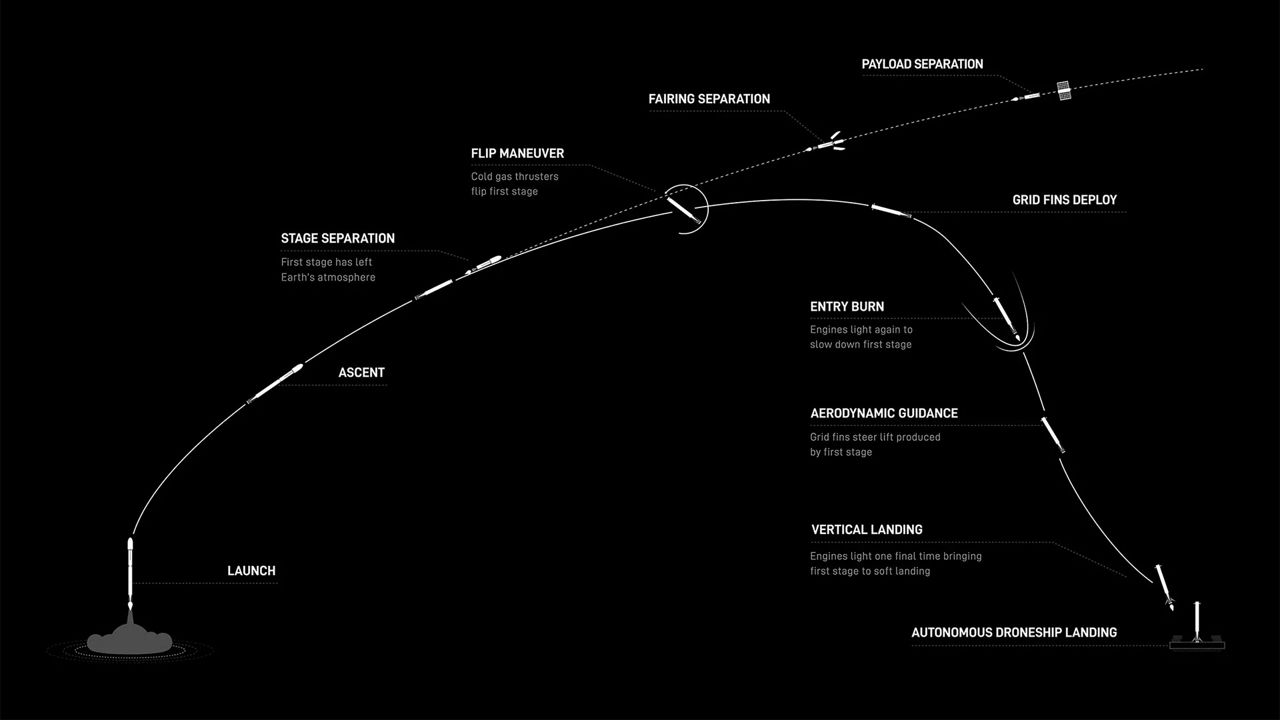CAPE CANAVERAL SPACE FORCE — The Sunday night liftoff of more than 20 Starlink satellites marked the 300th launch for SpaceX.
What You Need To Know
- More than 20 Starlink satellites went up
- Starlink 6-37 mission will leave from Space Launch Complex 40
Liftoff! pic.twitter.com/ChcZ89flRh
— SpaceX (@SpaceX) January 15, 2024
After a number of delays, the Falcon 9 sent up the Starlink 6-37 mission from Space Launch Complex 40 at Cape Canaveral Space Force Station at 8:52 p.m. ET, stated the company.
The launch was supposed to go up on Saturday night, but after a series of delays, SpaceX scrubbed the launch. It did not state why.

Leaving the launch pad
This was the 12th launch for SpaceX’s first-stage booster B1073. The 11 missions it has successfully launched before this one are:
- ispace's HAKUTO-R and NASA's Lunar Flashlight
- SES-22 telecommunications satellite
- Amazonas Nexus
- CRS-27
- 7 Starlink satellite missions
After the stage separation, the rocket’s first-stage booster landed on the droneship A Shortfall of Gravitas that was stationed in the Atlantic Ocean..
Falcon 9’s first stage has landed on the A Shortfall of Gravitas droneship pic.twitter.com/MCxQMLzBvl
— SpaceX (@SpaceX) January 15, 2024
About the mission
Going into low-Earth orbit, the 23 Starlink satellites are expected to join the thousands already up there that provide internet service, stated Starlink, which is a SpaceX company.
Before the launch, Harvard-Smithsonian Center for Astrophysics’ Dr. Jonathan McDowell has recorded the following information about the Starlink satellites.
- 5,309 are in orbit
- 5,273 in working order
- 4,621 are in operational orbit
In 2023, SpaceX completed 96 successful missions, safely flew 12 more astronauts to orbit, launched two flight tests of Starship, and more than doubled the number of people around the world connected by @Starlink.
— SpaceX (@SpaceX) January 12, 2024
Watch @elonmusk deliver a company update: pic.twitter.com/7zeTlQLgp9
300th SpaceX Launch
300th SpaceX launch
From satellites to making historical launches like the Demo-2 mission — the 2020 mission that saw the first time that U.S. astronauts launched from American soil in nine years — SpaceX has made commercial space flight a household name.
SpaceX’s Falcon rockets are the first ones to be reusable and able to land, either on drone ships or on landing zones. This has made the company a near go-to for U.S. government agencies, both national and international space agencies and private companies when it comes to launching missions, either to low-Earth orbit or deep space.
And while the accomplishments are impressive, SpaceX also has a history of failing, such as the recent attempt of launching its Starship. But that is the nature of rockets in general: It takes awhile to get it right.



